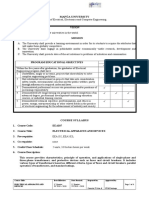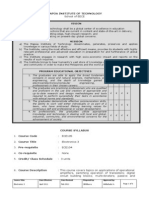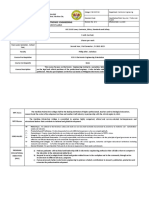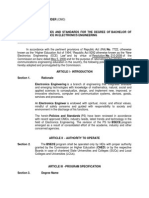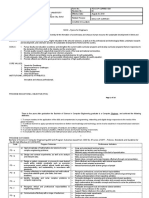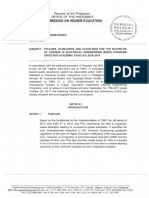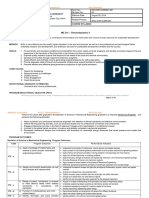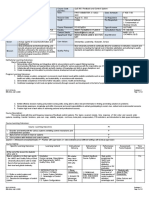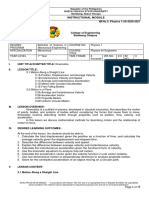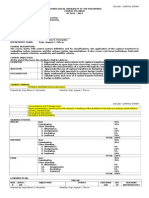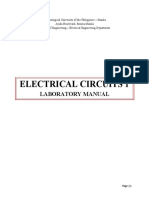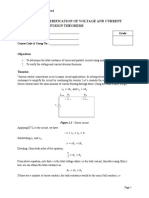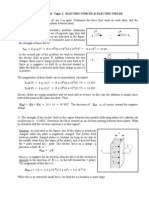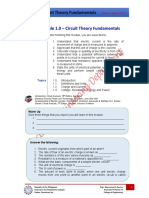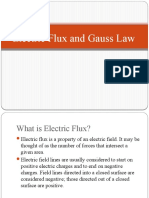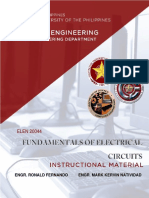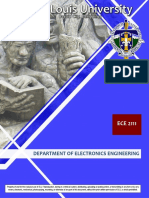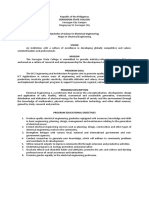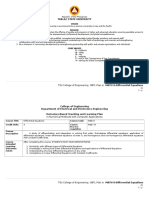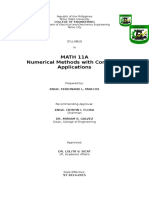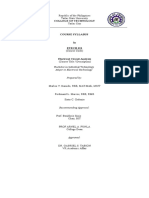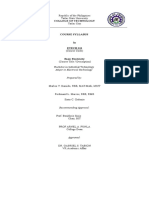Republic of the Philippines
Tarlac State University
COLLEGE OF ENGINEERING
Department of Electrical and Electronics Engineering
Tarlac City
SYLLABUS
In
EE 353
Electromagnetics for Electrical
Engineering
Prepared by:
ENGR. FERDINAND L. MARCOS
Recommending Approval:
ENGR. CRISPIN I. FLORA
Chairperson
DR. MIRIAM S. GALVEZ
Dean, College of Engineering
Approved:
DR. LOLITA V. SICAT
VP, Academic Affairs
Date Effective:
Date Revised:
Prepared by:
Approved by:
1st Semester 2015-2016
2nd Semester 2014-2015
Engr. F. L. Marcos
Dr. M. S. Galvez
Page No.:
1 of 5
�VISION
Tarlac State University is envisioned to be a premier University in the AsiaPacific.
MISSION
Tarlac State University commits to promote and sustain the offering of quality
and relevant programs in higher and advanced education ensuring equitable
access to education for people empowerment, professional development, and
global competitiveness.
Toward this end, TSU shall:
1. Provide quality instruction through qualified, competent and adequately
trained faculty members and support staff.
2. Be a premier research institution by enhancing research undertakings in
the fields of technology and sciences and strengthening collaboration
with local and international institutions.
3. Be a champion in community development by strengthening
partnership with public and private organizations and individuals.
PROGRAM EDUCATIONAL OBJECTIVES
1. To produce B.S. Electrical Engineering graduates who are
fully equipped with the fundamentals of electrical
engineering that will allow them to be immediately
competitive in industry or in graduate work while
providing the best opportunity for achieving their full
potential;
2. To develop B. S. Electrical Engineering graduates who
have a strong sense of ethical and professional
responsibility and social awarenesss.
MISSION
1 2 3
COURSE SYLLABUS
1. Course Code: EE 535
2. Course Title: Electromagnetics for Electrical Engineering
3. Pre-requisite:
Physics 2, Integral Calculus
4. Co-requisite: None
5. Credit:
3 units/ 3 hours per week
6. Course Description:
This course deals with vector analysis, electric and magnetic fields, resistive,
dielectric and magnetic materials, coupled circuits, magnetic circuits and fields,
time-varying electromagnetic fields and Maxwells equation.
Date Effective:
Date Revised:
Prepared by:
Approved by:
1st Semester 2015-2016
2nd Semester 2014-2015
Engr. F. L. Marcos
Dr. M. S. Galvez
Page No.:
2 of 5
�7. Student Outcomes and Relationship to Program Educational
Objectives:
Program
Educatio
nal
Student Outcomes
Objectiv
es
1
2
(a) Articulate and discuss the latest developments in the
specific field of practice;
(b Effectively communicate orally and in writing;
)
(c) Work effectively and independently in multi-disciplinary and
multi-cultural teams;
(d Act in recognition of professional, social, and ethical
)
responsibilities; and
(e) Preserve and promote Filipino historical and cultural
heritage
(f) Apply knowledge of mathematics and sciences to solve
engineering problems;
(g design and conduct experiments, as well as to analyze and
)
interpret data;
(h design a system, component, or process to meet desired
)
needs within realistic constraints such as economic,
environmental, social, political, ethical, health and safety,
manufacturability, and sustainability, in accordance with
standards;
(i) identify, formulate and solve engineering problems;
(j)
understand the impact of engineering solutions in a global,
economic, environmental, and societal context;
(k) recognize the need for and engage in life-long learning;
(l) apply techniques, skills, and modern engineering tools
necessary for engineering practice; and
(m know and understand engineering and management
)
principles as a member and/or leader in a team to manage
projects in multidisciplinary environments;
(n assess and evaluate power systems operations under
)
normal and abnormal conditions; and
(o) analyze the operating principles related to power generation
from non-conventional sources of energy
8. Course Outcomes and Relationship to Program Outcomes:
Course Outcomes
After completion of the
course, the student must
be able to:
1. Define
electromagnetic
quantities
2. Describe some
applications of
electromagnetic
Program Outcomes
a
Date Effective:
Date Revised:
Prepared by:
Approved by:
1st Semester 2015-2016
2nd Semester 2014-2015
Engr. F. L. Marcos
Dr. M. S. Galvez
m n
Page No.:
3 of 5
�theory to the field of
electrical engineering
E=Enabling, I= Introductory, D=Demonstrative
9. Course Coverage:
Wee
k
1
1-3
4-6
7-8
9
1011
1213
1415
Teaching and
Learning
Activities
Topics
Orientation; discussion of course goals and
expected outcomes; discussion of course
policies, grading system
Discussion
Introduction to Vector Analysis
Lecture;
class
discussion
Lecture;
class
discussion
Lecture;
class
discussion
Steady Electric and Magnetic Fields
Dielectric and Magnetic Materials
Assessmen
t Tasks
Week
Seatwork,
Board work
Homework,
Quiz 1
Seatwork,
Recitation
Homework,
Quiz 2
MIDTERM
Lecture;
class
discussion
Lecture;
class
discussion
Lecture;
class
discussion
Lecture;
class
discussion
Coupled and Magnetic Circuits
Time-Varying Fields and Maxwells Equation
Field and Circuit Relationships
1617
Transmission Lines
18
FINAL EXAMINATION
Board work
Homework
Seatwork,
Recitation,
Quiz 3
Seatwork,
Homework
Homework,
Quiz 4
10. Suggested References:
a. Engineering Electromagnetics, 8th Ed. William H. Hayt, Jr and John A. Buck, 2012
b. Electromagnetics with Applications, 5th Ed. John Kraus and Daniel Fleisch, 1999
11. Course Evaluation:
Quizzes
Term Examination
50%
30%
Date Effective:
Date Revised:
Prepared by:
Approved by:
1st Semester 2015-2016
2nd Semester 2014-2015
Engr. F. L. Marcos
Dr. M. S. Galvez
Page No.:
4 of 5
�Seatwork/Recitation/Assignment
10%
Attendance
10%
Total
100%
Final Grade = (Mid Term + Final Term) / 2
Passing Grade = 60%
GRADING SYSTEM
Average
96-100
91-95
86-90
81-85
76-80
71-75
65-70
60-64
Below 60
Aside from
Grade
1.00
1.25
1.50
2.00
2.25
2.50
2.75
3.00
5.00
academic deficiency, other grounds for a failing grade are:
Cheating during examinations
Grave misconduct other than cheating
Exceeding 20% of allowable absences
12. Committee Members:
Ferdinand L. Marcos - Chairman
Leo P. Piao
Date Effective:
Date Revised:
Prepared by:
Approved by:
1st Semester 2015-2016
2nd Semester 2014-2015
Engr. F. L. Marcos
Dr. M. S. Galvez
Page No.:
5 of 5
